SsangYong Korando vs Lynk & Co 01 - Differences and prices compared
Costs and Efficiency:
When it comes to price and running costs, the biggest differences usually appear. This is often where you see which car fits your budget better in the long run.
SsangYong Korando has a evident advantage in terms of price – it starts at 27000 £, while the Lynk & Co 01 costs 36900 £. That’s a price difference of around 9861 £.
Fuel consumption also shows a difference: Lynk & Co 01 manages with 0.90 L and is therefore decisively more efficient than the SsangYong Korando with 7.50 L. The difference is about 6.60 L per 100 km.
As for range, the SsangYong Korando performs convincingly better – achieving up to 339 km, about 264 km more than the Lynk & Co 01.
Engine and Performance:
Power, torque and acceleration are the classic benchmarks for car enthusiasts – and here, some clear differences start to show.
When it comes to engine power, the Lynk & Co 01 has a distinct edge – offering 276 HP compared to 190 HP. That’s roughly 86 HP more horsepower.
In acceleration from 0 to 100 km/h, the Lynk & Co 01 is minimal quicker – completing the sprint in 7.70 s, while the SsangYong Korando takes 8.40 s. That’s about 0.70 s faster.
In terms of top speed, the Lynk & Co 01 performs slight better – reaching 200 km/h, while the SsangYong Korando tops out at 191 km/h. The difference is around 9 km/h.
There’s also a difference in torque: Lynk & Co 01 pulls evident stronger with 535 Nm compared to 360 Nm. That’s about 175 Nm difference.
Space and Everyday Use:
Beyond pure performance, interior space and usability matter most in daily life. This is where you see which car is more practical and versatile.
Seats: offers more seating capacity – vs .
In curb weight, SsangYong Korando is evident lighter – 1517 kg compared to 1935 kg. The difference is around 418 kg.
In terms of boot space, the SsangYong Korando offers a bit more room – 551 L compared to 466 L. That’s a difference of about 85 L.
In maximum load capacity, the SsangYong Korando performs barely noticeable better – up to 1248 L, which is about 35 L more than the Lynk & Co 01.
When it comes to payload, SsangYong Korando a bit takes the win – 463 kg compared to 415 kg. That’s a difference of about 48 kg.
Who comes out on top?
Overall, the Lynk & Co 01 shows itself to be leaves the rival little chance and secures the title of DriveDuel Champion.
It convinces with the more balanced overall package and proves to be the more versatile choice for everyday use.
 @ Lynk & Co / Geely Auto Group
@ Lynk & Co / Geely Auto Group
Lynk & Co 01
Costs and Consumption
View detailed analysis
Engine and Performance
View detailed analysis
Dimensions and Body
View detailed analysis
SsangYong Korando
The SsangYong Korando pairs bold, modern styling with a surprisingly roomy and practical cabin, so it looks confident at the lights and handles the daily grind without fuss. It swaps flashy badges for honest value, offering a composed ride, useful equipment and wallet-friendly running that make it an appealing pick for buyers who'd rather spend on weekends than on extravagant finance packages.
details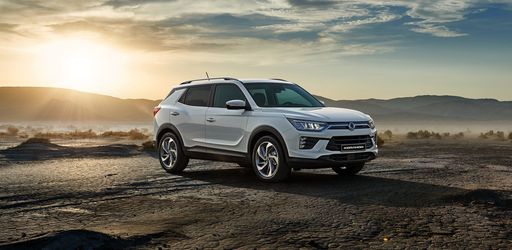 @ SsangYong Motor / KG Mobility
@ SsangYong Motor / KG Mobility
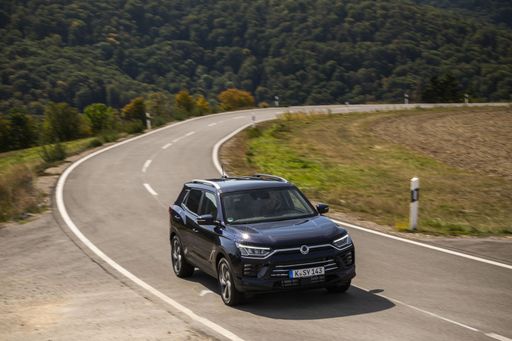 @ SsangYong Motor / KG Mobility
@ SsangYong Motor / KG Mobility
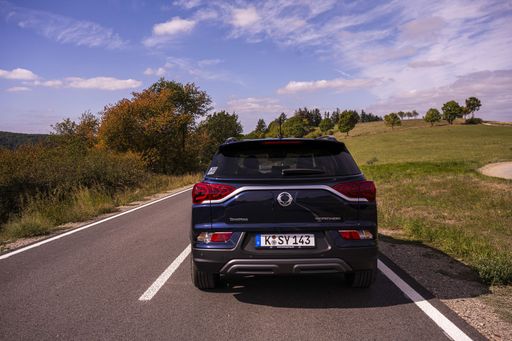 @ SsangYong Motor / KG Mobility
@ SsangYong Motor / KG Mobility
 @ SsangYong Motor / KG Mobility
@ SsangYong Motor / KG Mobility
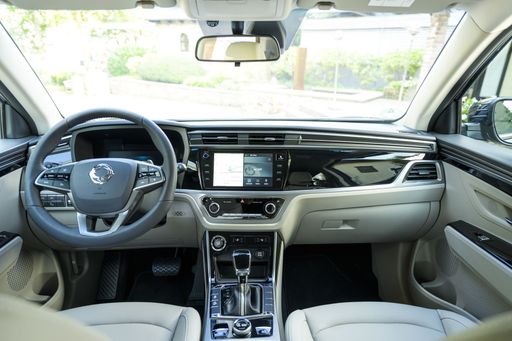 @ SsangYong Motor / KG Mobility
@ SsangYong Motor / KG Mobility
Lynk & Co 01
The Lynk & Co 01 marries bold, contemporary styling with a roomy, well-appointed cabin, striking a rare balance between fashionable flair and everyday practicality. With intuitive tech, flexible ownership ideas and a playful driving character, it’s the kind of crossover that turns heads at the lights and keeps owners grinning on the commute.
details @ Lynk & Co / Geely Auto Group
@ Lynk & Co / Geely Auto Group
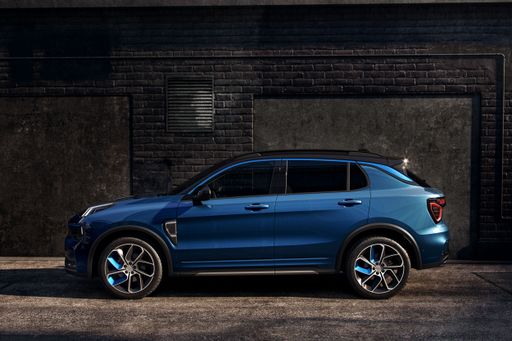 @ Lynk & Co / Geely Auto Group
@ Lynk & Co / Geely Auto Group
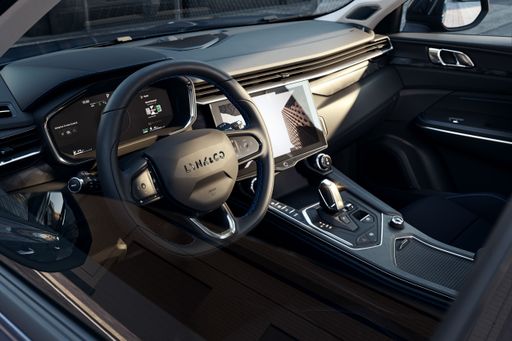 @ Lynk & Co / Geely Auto Group
@ Lynk & Co / Geely Auto Group
 @ SsangYong Motor / KG Mobility
@ SsangYong Motor / KG Mobility
|
 @ Lynk & Co / Geely Auto Group
@ Lynk & Co / Geely Auto Group
|
|
|
|
Costs and Consumption |
|
|---|---|
|
Price
27000 - 42000 £
|
Price
36900 - 40300 £
|
|
Consumption L/100km
7.5 - 8.6 L
|
Consumption L/100km
0.90 L
|
|
Consumption kWh/100km
16.80 kWh
|
Consumption kWh/100km
-
|
|
Electric Range
339 km
|
Electric Range
75 km
|
|
Battery Capacity
-
|
Battery Capacity
-
|
|
co2
0 - 197 g/km
|
co2
20 g/km
|
|
Fuel tank capacity
50 L
|
Fuel tank capacity
42 L
|
Dimensions and Body |
|
|---|---|
|
Body Type
SUV
|
Body Type
SUV
|
|
Seats
5
|
Seats
5
|
|
Doors
5
|
Doors
5
|
|
Curb weight
1517 - 1840 kg
|
Curb weight
1935 kg
|
|
Trunk capacity
551 L
|
Trunk capacity
466 L
|
|
Length
4450 - 4465 mm
|
Length
4545 mm
|
|
Width
1870 mm
|
Width
1860 mm
|
|
Height
1620 - 1645 mm
|
Height
1694 mm
|
|
Max trunk capacity
1248 L
|
Max trunk capacity
1213 L
|
|
Payload
410 - 463 kg
|
Payload
415 kg
|
Engine and Performance |
|
|---|---|
|
Engine Type
Petrol, Electric
|
Engine Type
Plugin Hybrid
|
|
Transmission
Manuel, Automatic
|
Transmission
Automatic
|
|
Transmission Detail
Manual Gearbox, Automatic Gearbox, Reduction Gearbox
|
Transmission Detail
Automatic Gearbox
|
|
Drive Type
Front-Wheel Drive, All-Wheel Drive
|
Drive Type
Front-Wheel Drive
|
|
Power HP
163 - 190 HP
|
Power HP
276 HP
|
|
Acceleration 0-100km/h
8.40 s
|
Acceleration 0-100km/h
7.70 s
|
|
Max Speed
156 - 191 km/h
|
Max Speed
200 km/h
|
|
Torque
260 - 360 Nm
|
Torque
535 Nm
|
|
Number of Cylinders
4
|
Number of Cylinders
4
|
|
Power kW
120 - 140 kW
|
Power kW
206 kW
|
|
Engine capacity
1497 cm3
|
Engine capacity
1499 cm3
|
General |
|
|---|---|
|
Model Year
2021 - 2023
|
Model Year
2024
|
|
CO2 Efficiency Class
F, G, A
|
CO2 Efficiency Class
B
|
|
Brand
SsangYong
|
Brand
Lynk & Co
|
What drive types are available for the SsangYong Korando?
Available configurations include Front-Wheel Drive or All-Wheel Drive.
The prices and data displayed are estimates based on German list prices and may vary by country. This information is not legally binding.
